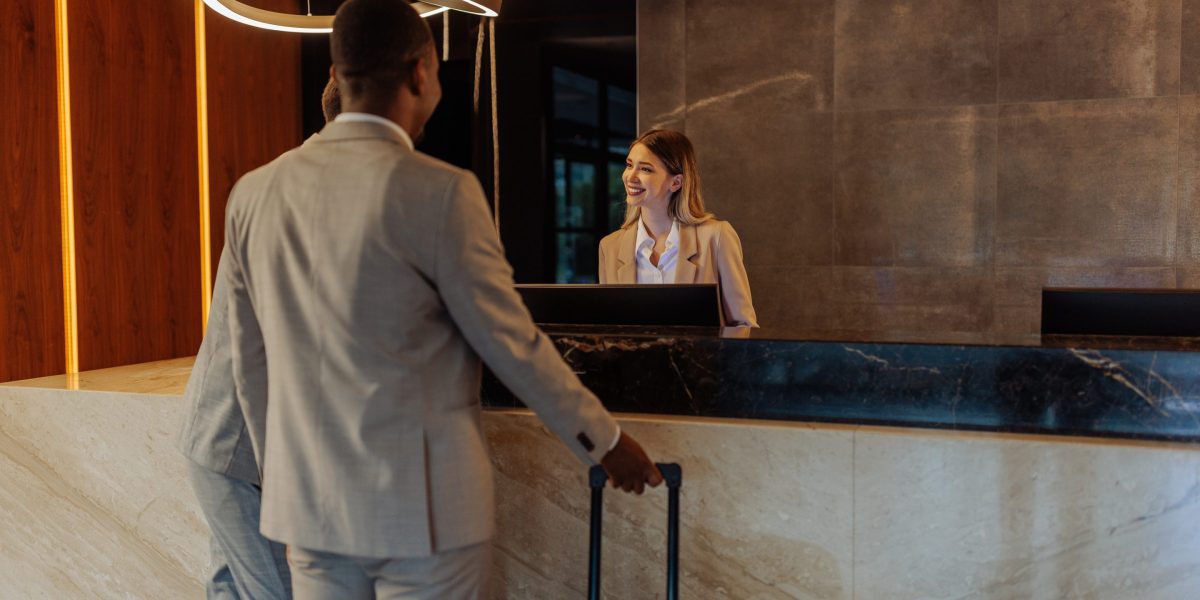There’s no better feeling for HR pros than seeing the success of a well-used and well-liked employee program. No better feeling, indeed, except when the program also benefits your company’s bottom line.
That’s the case for Hilton’s employee travel program. The perk, called Go Hilton, is a worker favorite, and brings in millions of dollars in revenue each year.
Using Go Hilton, employees and their friends and family members can stay at a Hilton property for steeply discounted rates. Team member rates include up to 40 nights per year, and the majority of hotels are priced at tiered flat rates, ranging from $40 to $80 per night. Friends and family rates grant 70 nights annually at 50% off the best available rate.
“Travel is core to what we do,” Lora Lawler, Hilton’s VP of total rewards and HR technology, told HR Brew. “We have such a unique opportunity to use travel and our founding purpose to really engage our team members.”
The perk wasn’t always beloved, however. In fact, it was a source of major frustration before undergoing a revamp a decade ago.
Beloathed to beloved. The original team member travel program prompted consistent worker criticism in Hilton’s annual internal surveys.
“Year after year, this was the greatest dissatisfier that team members were talking about,” Rick Morrow, senior director of the Go Hilton program who led the program revamp, told HR Brew.
The biggest headache was the difficulty finding room availability. The system relied on hotel management to add unoccupied rooms to the platform—which often wouldn’t happen, according to Morrow. If employees managed to book a room, they’d need to provide written documentation stating which hotel they’re staying at and for how long, and sign off from their managers. Workers would forget the documentation, and get turned away by the hotel.
In 2016, Hilton introduced the Go Hilton program, complete with a new booking site and system for finding room availability. The process was made fully electronic, ditching the paper documentation.
To solve the lack of rooms problem, Morrow’s team centralized the process for adding availability to the platform. Working with Hilton’s commercial teams, it created an occupancy forecast model. Hilton’s reservation system contains historical data on what the occupancy was, and is, expected to be for each hotel. Using this data, the model calculates what rooms are most likely to go unsold during less busy periods that could be made available to employees at discounted rates.
Embracing evolution. The perk is not treated as a “set it and forget it” strategy. Lawler’s and Morrow’s teams have made changes to the program, primarily relying on employee feedback via an annual survey.
“We’re always looking at ways to improve the program. Even now, we haven’t reached perfection,” Lawler said.
For example, when they first introduced the program, the annual allotment for both the team member rates and friends and family rates were set at 30 nights each. Employees in early feedback said the friends and family rates were getting used up quickly, so Hilton expanded those rates to 70 nights per year and extended the team member allotment to 40 nights this year, following similar feedback.
Hilton also introduced a long-term tenure program, where team members who’ve been with Hilton for 10 years or more get lifetime friends and family rates, and after 20 years earn lifetime team members rates. That specific offering boosts employee retention.
“I don’t know how many times I can tell you, we’ve heard someone say… they’re thinking about maybe retiring or moving on, and they’re like, ‘No, no, I’m sticking around for another year or two because I want those team member rates for life,” Morrow said. “That’s how you keep good people.”
Win-win. Since its revamp, more than 35.8 million rooms have been booked via Go Hilton. The perk has also proven to be a success for Hilton’s bottom line. Since its reintroduction, Go Hilton has generated nearly $3 billion in revenue. Last year was its most successful, earning almost $550 million.
For other HR leaders who want to introduce successful talent programs that boost revenue, Lawler recommends they hone in on a product or offering that’s valuable to their team members.
“The key to Go Hilton is making it not just work for our team members and our employees, but also for our business,” Lawler said. “I have worked at other places, or potentially worked at other places, where [I’ve thought] well, they must have a discounted version of you name it, and then you find out they don’t, because it’s potentially cost prohibitive. So I would just encourage HR leaders to get creative and think about the interesting ways to do that.”
This report was written by Paige McGlauflin and was originally published by HR Brew.
This story was originally featured on Fortune.com

